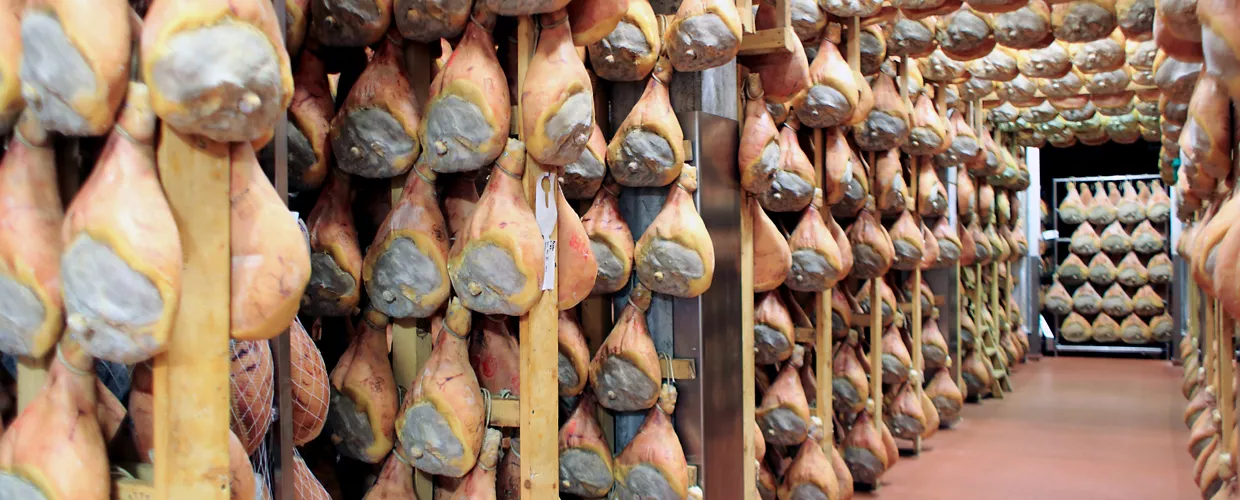This content was automatically translated. View the original text.

Overview
Taste tradition at the Parma Ham Museum
Welcome to Langhirano, the cured ham district: in fact, it’s not only home to the Parma Ham Museum, but also a festival dedicated to this delicacy produced between the Po River and the Apennines.
The museum is located in the former Foro Boario and is well worth a visit, also to discover the other cured meats produced in the area, including culatello di Zibello and spalla di San Secondo. With tasting included, of course!
The art of the “lardaroli”
Cured meats have been made in Parma since the Middle Ages, when lardaroli, or lard-makers, began to specialise here, handing down a much older tradition from generation to generation: the Romans already produced exquisite salted hams in the 2nd century BC.
That tradition, spoken of by Latin authors such as Horace and Plautus, was consolidated over time. Parma ham is already referred to in a cookbook from the 1300s. Then it is found in a 16th-century wedding menu, among Tassoni's poems and even among the dietary advice of a 16th-century Bolognese doctor.
Today, the artisan processing has been complemented by more modern technologies that have improved hygienic conditions without affecting taste. Or tradition: salter maestros prepare the legs for curing, which lasts at least 12 months. At the end of which only the hams that pass strict controls are branded with the five-pointed ducal crown.
Learning about ham at Foro Boario
The museum is located between the historic centre of Langhirano and the Parma stream, on an area taken from the river in the early 1900s to protect the town from flooding. The Slaughterhouse and the Foro Boario, rural architecture originally intended for the sale of livestock, date back to that period.
The itinerary includes eight stops, in as many sections in the museum. First learn about the territory and pig breeds, then salt, which is indispensable for preserving cured meats. Step by step, you’ll discover all the secrets of Parma ham, from its production to its use in the kitchen. Finish with the inevitable tasting in the museum's prosciutteria.
In Langhirano and surroundings
Langhirano is located on the green slopes of the Parma Apennines and the festival dedicated to Parma ham is held here the first two weekends of September.
The historical salumifici were located along the stream to better utilise the area’s fresh air for curing hams. They are still here, although no longer in use. The Town Hall is also worth a visit, built in the 13th century and remodelled in the 1600s.
A few kilometres from the village on the opposite bank of the stream, you’ll find the Badia Cavana founded on a hill in 1111, a very important abbey. Its jewel is the small Romanesque church dedicated to St Michael. A little further away you’ll come across the Torrechiara Castle, dating back to the 15th century.
If you feel like taking a stroll, enjoy the Torrechiara Art Trail connecting the castle to Langhirano, running along the San Michele canal through woods, fields and vineyards of the ancient Torcularia, the medieval name for Torrechiara.